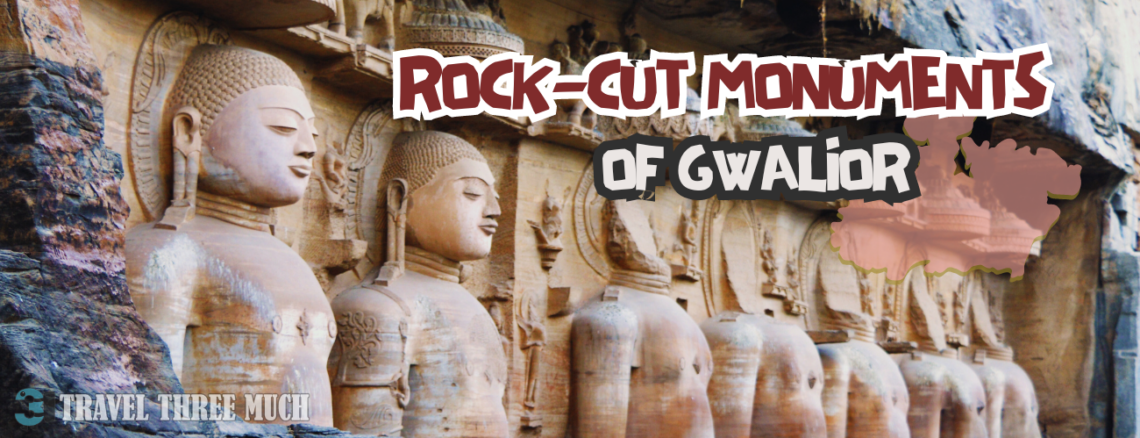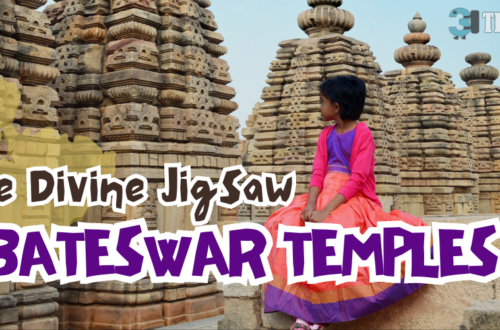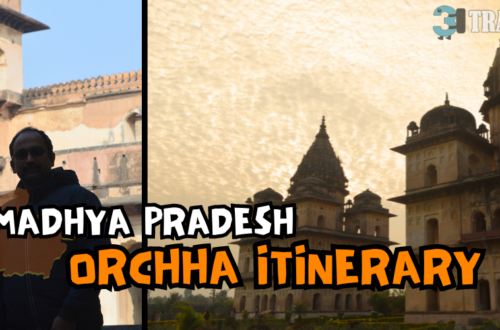
Discovering Gopachal and Siddhachal Caves: Rock Cut Jain Temples of Gwalior
We visited a group of rock cut Jain monuments on the hill sides atop which sits the Gwalior Fort. The monuments find mention in the reports of Alexander Cunningham, who later went on to found the Archaeological Survey of India.
Siddhachal Parvat – Cluster 1
We visited the Siddhachal Parvat first. This group of monuments are located near the Urvai road, near the Teli Ka Mandir within the Gwalior fort.
The first series of monuments that come into view are a pavillion of 5 Tirthankars recessed into twin alcoves the hill side with 2 moreTtirthankars standing on the outside walls.
No surface is left unadorned without carvings and there are many more carvings of tirthankars and Jain motifs that are in spaces where you least expect them to be.
There are also many caves and niches which hide more artistic treasures, if you’re prepared to spend the time to discover them.
As we got down from our cab and explored this small hillock, we were filled with so much wonder. The place was dotted with caves and hidden nooks, each holding its own share of artistic treasures waiting to be discovered.
Walking around, we couldn’t help but feel amazed by everything we saw. Sure, some of the sculptures were in ruins, which made us think about the incredible skill that must’ve gone into making them, now lost to time.
But even amidst the ruins, there was a sense of wonder that never left us.
It was like every piece had a story to tell, and even though they were worn down, they still managed to captivate us with their beauty. It made us appreciate just how talented people were back then, and how their work continues to inspire us today.
Siddhachal Parvat – Cluster 2
As you make your way up the Urvai road, about halfway up is a massive statue of Adinath that is in a complex accessible by a flight of stairs that descend to below the road level. A little way past this is the actual ‘Urvai gate’ which dates from the 13th century, added as a part of the strengthening the defences of the fort complex.
The carved monuments date from early 15th century until about 1473, commissioned by the Tomar kings who were ruling at that time.
The monuments are statues of 24 Tirthankaras, spiritual leaders who are considered as teachers spreading the message of liberation from the cycle of birth and death.
The statues are hewn out of the solid rock from the cliffside. They depict the Tirthankaras in standing Kayotsarga and seated Padmasana postures, but in the typical Jain icoography that uses the naked human form. After Babur reinstated the Mughal dynasty, he ordered the destruction of the idols as the depiction of the Tirthankaras offended his sensibilities. Fortunately, although the statues were defaced following the emperor’s orders, they escaped complete obliteration and some are even intact today. The defaced statues have undergone some restoration with stucco.
Cunningham’s report describes five groups of carvings, of which we visited two main groups, popularly known as the Siddhachal Parvat and Gopachal Parvat respectively.
Gopachal Parvat
We visited the Gopachal group of monuments next. It is accessible by road up to the entrance and is called the Gopachal Atishay Kshetra (Gopachal Miracle Point). The ‘miracle’ refers to the legend where the attempt by Mughal soldiers to destroy the statues at this location on the Emperor Babur’s orders, failed due to divine intervention. It’s also referred to as the Ek Patthar Ki Baoli, referring to a well that’s in the proximity of the first of the caves in the monument complex here. There’s now a Jain temple of the Digambar sect at this location that maintains these monuments and their sancity. We were asked to deposit our bags and footwear at the start of the small trek to the hillside with the carvings. Although the tree cover was extensive over the trekking path, there are patches where shade is sparse and the barefoot trek may prove difficult to the elderly and children.
Consider bringing socks along if you plan your visit during sunny days. At the top of the hillside, the massive scale of the monuments slowly lingers into view as you clear the last of the steps. There were security guards there (probably to dissuade the more ‘adventerous’ visitors from trying to climb to the higher platforms hewn in the rock to pour liquid offerings over the deities on special occasions in the times gone by) but they largely kept to themselves. The details on the carvings and the mighty scale of the deities here were a sight to behold! The entrance facade to a few of the caves had a two-tiered temple complete with a vimana and twin niches with deities at the bottom level. We couldn’t help but comparing the grandeur of what we saw before us to the picture of Petra we’d come across.
We lingered around far longer than we had originally planned taking in the sights and many caves which had a plethora of carvings hidden away. There were very few visitors other than us and so we pretty much had the entire place to ourselves. We couldn’t bring ourselves to part from there and it was only the failing light made us leave the place.





